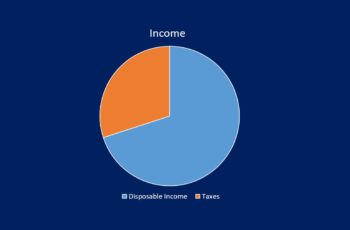The US Personal Consumption Expenditures (PCE) indicator is also known as consumer spending. It measures the change in the amount of money US consumers (or, on behalf of them) spent in a given month compared to the previous one.
In other words, the PCE counts your spending when you pay for:
- durable goods such as cars and washing machines;
- non-durable goods such as pizza;
- services such as interest and money transfer fees; and
- when an insurance company or a charity pays on Americans’ behalf.
The BEA releases the Personal Income and Outlays report which contains:
- Personal income: the sum of money collectively received by the USA residents;
- Disposable income: the amount of money that residents can spend after taxes;
- Personal consumption expenditure (PCE): is the change in the amount of money that American residents spend in a given month compared to the previous month;
- PCE price index: is an index for measuring inflation and the Federal Reserve prefers it over CPI; and
- Core PCE: is the PCE minus food and energy prices.
The Personal Consumption Expenditures Index is somewhat similar to the Consumer Price Index. Both measure changes in prices or inflation. However, they are measured from different points of view. You read their differences at the end of this article. Now continue reading.
Importance of Personal Consumption Expenditures
The PCE reflects changes in consumer behavior regarding goods and services. It shows consumer responses to the economic condition. Consumers increase their spending if they feel good about the economy and decrease if they feel insecure.
According to the BEA, the consumer spending constitutes about two-thirds of the Gross Domestic Product (GDP), making it a key index for economic decisions. So, it is used to forecast economic growth.
Moreover, the BEA prefers the PCE to measure inflation because it has some better qualities than the CPI. You will read the difference between the CPI and consumer spending at the end of this article.
In addition, investors follow this indicator to predict government monetary policy and fiscal policy. For example, too much increase in the Personal Consumption Expenditures may lead to a higher inflation rate. The central bank response may respond maybe raising the interest rate.
However, a targeted increase in the PCE reading is a positive sign as it indicates that the economy is under control.
A higher PCE reading than the forecasted value can have a positive impact on the US Dollar and the US stock market. The opposite may happen if it decreases.
But, this report generally has a mild impact due to being released with a month lag and the data on retail sales being released about two weeks earlier.
Personal Consumption Expenditures Historical Data
The following graph shows the historical data on consumer spending from 1960 to 2023.
Differences between PCE and CPI
In the US, the Personal Consumption Expenditures (PCE) and the Consumer Price Index (CPI) are the two primary
measures of the prices that consumers pay for goods and services.
But their calculations and surveys vary. So, they tend to behave differently over time.
Here are three major differences between the PCE and the CPI.
| Number | Differences | Personal Consumption Expenditures | Consumer Price Index (CPI) |
|---|---|---|---|
| 1 | Formula | The PCE index is based on a Fisher-Ideal formula. | The CPI index is an average based on a Laspeyres price index formula. |
| 2 | Survey | For the calculation of PCE, businesses such as retailers are surveyed. | For the calculation of CPI, consumers are surveyed. |
| 3 | Scope | The PCE measures the price change of goods and services that households and others (insurance companies and charities) pay for them. | The CPI measures the price change of goods and services that households pay. |
Bottom Line
The Personal Consumption Expenditures (PCE) indicator, known as consumer spending, the amount of money that US residents and those who paid on their behalf in a given month.
Because consumption accounts for over 60% of the US GDP, analyzing this data is crucial for investors. However, due to a month lag in publishing data, it has a minimal impact on the Forex and stock market.
The PCE is used to construct the PCE Index, forecast GDP, and calculate the inflation rate.


![Consumer Confidence Index [A Comprehensive Guide] Consumer Confidence Index [A Comprehensive Guide]](https://srading.com/wp-content/uploads/2023/10/consumer-condfidence-index-350x230.png)



